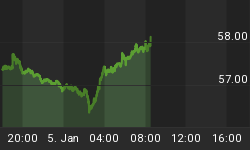Recent data on the real estate market leaves no doubt that the housing bubble is quickly deflating. In 2006 existing home sales declined by 8.4%, the biggest drop in 17 years, and new homes sales fell by 17.3%, the largest in 16 years.
According to the National Association of Realtors, sales declined by 10.1 percent nationwide in the fourth quarter compared with the same period a year ago. The national median price slipped 2.7 percent to US$219,300 from US$225,300 the year before.
California was among the states with the biggest sales declines from October through December, behind Nevada, Florida, and Arizona. The National Association of Realtors reported that 40 states had drops in sales. Prices fell in half of the nation's major markets.
San Francisco Bay Area home sales fell in January for the 24th straight month, and prices dropped to their lowest level in a year and a half. According to DataQuick, January 2006 sales were the lowest for any January in 11 years.
The Commerce Department announced that the construction of new homes fell in January by 14.3% and that the number of vacant homes increased by 34% in 2006 to 2.1 million units, nearly double the long-term vacancy rate.
From 2000 and 2006 mortgage debt soared from US$4.8 trillion to US$9.5 trillion on a reserve of US$44 billion.
By the time the housing bubble deflates, millions of working class Americans will be left to pay off loans that are considerably higher than the current value of their home - assuming they still have one.
Foreclosures
Americans continue having difficulties paying their mortgage obligations, with December foreclosure rates above the 100,000 mark for the 5th straight month. According to RealtyTrac, the number of homeowners entering some stage of foreclosure process in December was 109,000 ...up 35% from December 2005.
In 2006, a mere US$300 billion in ARMs reset pushed over-leveraged homeowners to or over the brink of insolvency. About US$1 trillion in Adjustable Rate Mortgages (ARM) are due to reset by late-2007. Even if the Fed does not raise rates anymore the ARM's will go up because they will adjust upward from the low introductory teaser rates.
Millions of borrowers will see dramatic increases in their monthly mortgage payments on homes that have depreciated 10% to 20% in value. The number of foreclosures will exert greater downward pressure on housing by increasing inventory. Given that nearly a third of job creation has come from the housing industry in the last 5 years we can expect an increase in unemployment.
RealtyTrac reports that home foreclosures surged 19% between December 2006 and January 2007. 130,511 American homes were in some stage of foreclosure last month, up 82.5% in two years.
The Center for Responsible Lending (CRL) estimates that 2.2 million American homeowners who took out sub-prime loans from 1998 to 2006 will likely lose their homes via foreclosure. One speaker anticipates a "humanitarian disaster worse than Katrina" from vast overuse of sub-prime lending practices.
In testimony to the Senate Banking Committee in September, Michael Calhoun, the President of the CRL, explained an example of the most typical sub-prime loan, known as a 2/28, with an "exploding ARM". Buyers can qualify for this type of loan if the original ("teaser") monthly payment is not higher than 61% of their after-tax income. At the end of two years, even without a rise in interest rates, the payment will typically rise to 96% of the purchaser's monthly income.
Nobody can afford a mortgage that high.
The Friedman Billings Ramsey Group reports that seriously delinquent mortgages (borrower is at least 90 days behind on his payments or the home is already in foreclosure) make up 10.1% of today's high-risk mortgages. That is worse than late 2001, when the economy was in recession and far above the 5.37% seen in mid-2005.
Conclusions
Kurt Richebacher, Editor of The Richebacher Letter predicts, "the US economy is in danger of a recession that will prove unusually long and severe. By any measure it is in far worse shape than in 2001-02 and the unravelling of the housing bubble is clearly at hand."
The U.S. housing bubble began in 2001 when Greenspan lowered interest rates to a 40-year low 1% thereby igniting a refinancing and housing boom. Alan Greenspan knew exactly what the consequences of his low interest rate policies would be. In order to mask a deteriorating economy many ill-informed and unqualified borrowers were lured into home ownership believing that their stagnant wages would be bolstered by never-ending real estate appreciation. Now, after seventeen straight interest rate hikes, the bubble has begun to collapse.
According to the Marcus & Millichap Real Estate Investment Brokerage Company, the national median rent for 2007 will be US$943.00 a month, only 60% of the median mortgage payment of US$1,566. With housing prices expected to decline further, one must ask why buy when you can rent?















